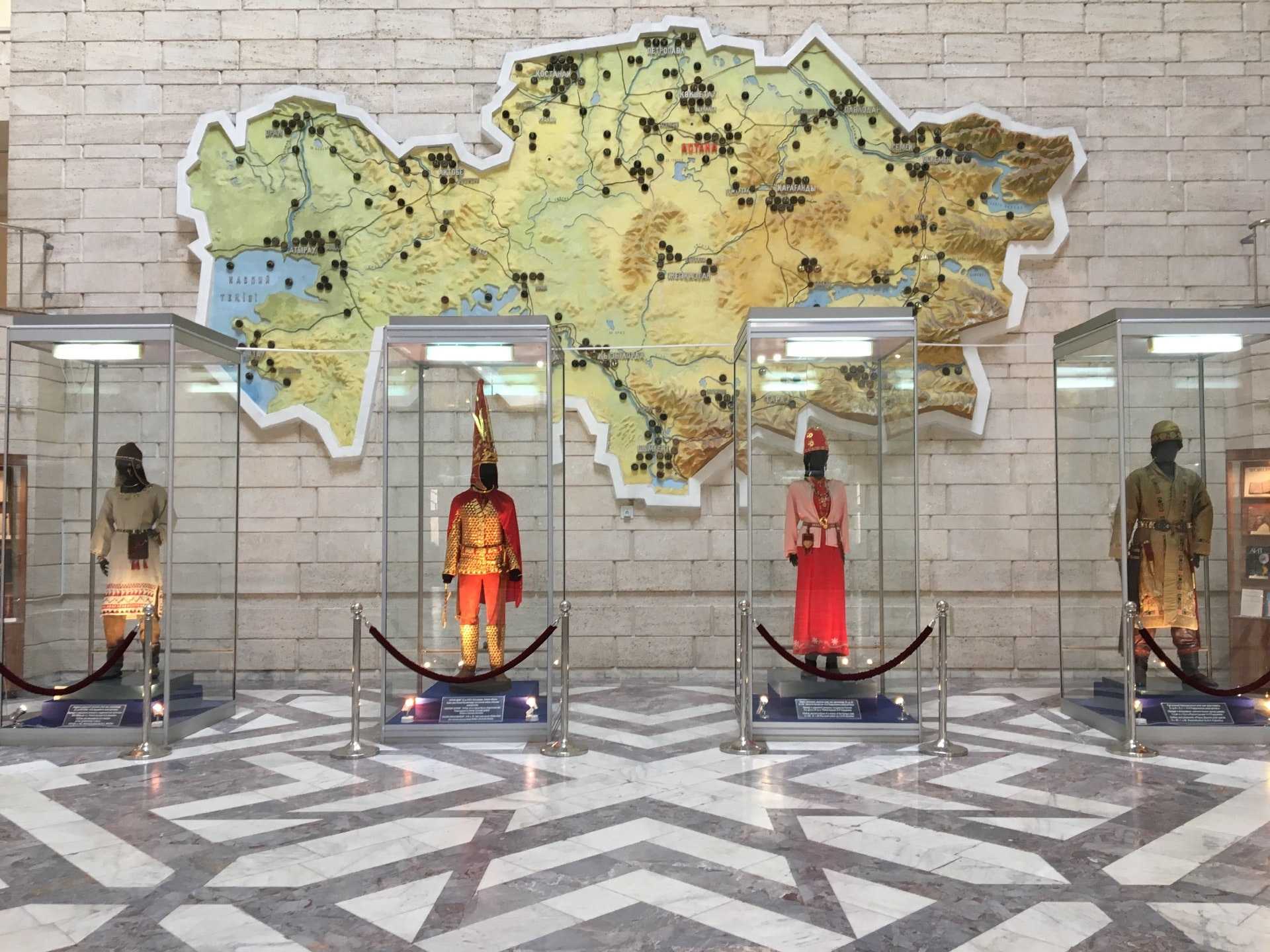The State Museum of Kazakhstan was opened in Almaty in 1931. At that time it was located in the building of the former Ascension Cathedral. The museum collection included exhibits from the funds of the Orenburg Museum, which were joined by the collections of the Museum of the Semirechensk region, the Cossack army and the Republican Anti-Religious Museum.
A big event for the State Museum of the Republic took place in 1985 - under the guidance of architects Y. Ratushny, Z. Mustafina and B. Rzagaliyev, a new building was built for it, which to this day is considered one of the most striking examples of modern urban architecture.
The museum occupies 3 floors with a total area of 17.5 thousand square meters.
The first hall of the State Museum is dedicated to palaeontology. Numerous exhibits collected during archaeological excavations on the territory of Kazakhstan include the fossilized remains of prehistoric animals, fragments of plants, trees that existed thousands of years before the appearance of a man.
The exposition of the second hall, dedicated to historical ethnography, introduces the museum visitor to the history of the region from the 15th century to the present. Here you can see household items, weapons, national decorations and much more.
In the third hall, visitors are offered exhibits related to the culture and history of various ethnic groups inhabiting Kazakhstan. Visitors can see the rarest photographs and documents, works of art, as well as household items. Also in the third hall, there is an exposition, which is dedicated to the participation of the people of Kazakhstan in the Second World War.
The fourth hall of the museum presents the modern history of the republic, which began after the declaration of independence in 1991. Among the exhibits, you can see awards and banknotes, as well as symbols of the republic: the flag and Emblem of Kazakhstan.
"Open Fund". The pearl of the exposition is the rich collection of gold from the ancient treasures of the Kazakh nomads. Various finds are dated from the 7th to the 1st century. BC e. In addition to gold, jewellery by oriental craftsmen is presented here; daggers adorned with precious stones; horse harnesses made of silver and gold.
Museum of Anthropology. The exposition includes 3 parts. The first is a description of the classifications of human races, schemes of the evolutionary series, maps of the distribution of peoples. The second part of the exposition shows the stages of human evolution with visual reconstructions. The third part demonstrates anthropological material related to the territory of present-day Kazakhstan. Particularly impressive are 3 dioramas that take you back to the times of primitive people.
Hall of N. G. Khludov. The exposition is dedicated to the famous Russian artist and ethnographer Nikolai Gavrilovich Khludov. The hall displays paintings, photographs and his personal belongings.

- Monday:
-
09:00 - 18:00
- Tuesday:
- Closed
- Wednesday:
-
09:00 - 18:00
- Thursday:
-
09:00 - 18:00
- Friday:
-
09:00 - 18:00
- Saturday:
-
09:00 - 18:00
- Sunday:
-
09:00 - 18:00







